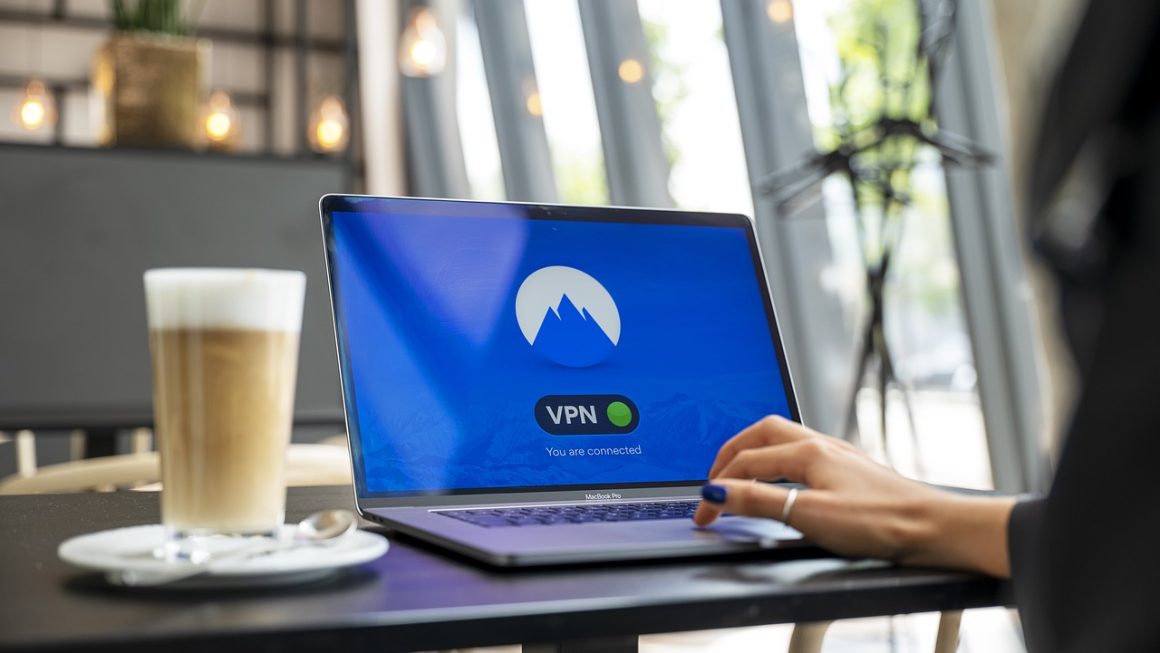In today’s rapidly evolving economy, relying solely on a single income stream can feel precarious. More and more individuals are seeking additional ways to supplement their earnings, pursue their passions, and achieve greater financial security. Enter the side hustle: a venture undertaken in addition to one’s primary job, offering a powerful avenue for growth, learning, and potentially, even entrepreneurial independence. This comprehensive guide explores the world of side hustles, providing practical insights and actionable steps to help you launch and thrive in your own secondary income stream.
Why Start a Side Hustle?
Financial Security and Independence
One of the most compelling reasons to start a side hustle is the enhanced financial security it provides. A secondary income stream can act as a safety net in case of job loss, unexpected expenses, or simply to accelerate your financial goals.
- Pay off Debt: Dedicate your side hustle earnings to eliminating credit card debt, student loans, or mortgages faster.
- Build an Emergency Fund: Create a financial buffer to cover unexpected costs like medical bills or car repairs.
- Invest for the Future: Invest your side hustle income to build long-term wealth through stocks, bonds, or real estate.
- Example: Sarah, a full-time teacher, earns an extra $500 per month tutoring students online. She uses this income to pay down her student loan debt aggressively.
Pursue Your Passions and Interests
A side hustle provides a fantastic opportunity to explore your passions and turn them into a source of income. This can lead to increased job satisfaction and a greater sense of fulfillment.
- Turn a Hobby into Revenue: If you enjoy photography, offer your services for events or create and sell stock photos. If you love baking, start a small home-based bakery.
- Develop New Skills: Learning new skills through a side hustle can enhance your resume and make you more competitive in your primary career.
- Increased Job Satisfaction: Even if your primary job isn’t your dream role, a passion-based side hustle can provide a much-needed creative outlet.
- Example: John, a software engineer, is passionate about woodworking. He creates and sells custom furniture pieces on Etsy, generating supplemental income and fulfilling his creative desires.
Entrepreneurial Experience and Growth
Starting a side hustle is essentially running a mini-business. This provides valuable entrepreneurial experience, allowing you to learn about marketing, sales, customer service, and financial management.
- Test Business Ideas: A side hustle allows you to test a business idea with minimal risk before committing fully.
- Develop Business Acumen: Learn the ins and outs of running a business, from creating a business plan to managing your finances.
- Build a Network: Connect with other entrepreneurs, potential customers, and industry professionals.
- Example: Maria, a marketing manager, starts a freelance social media management business as a side hustle. This allows her to gain practical experience and build a portfolio, eventually leading to her launching her own marketing agency.
Identifying Profitable Side Hustle Ideas
Assess Your Skills and Interests
The best side hustle ideas are often those that align with your existing skills, interests, and experiences. This makes it easier to get started and maintain momentum.
- List Your Skills: Brainstorm all your skills, both professional and personal. Consider things like writing, design, coding, teaching, cooking, or crafting.
- Identify Your Interests: What do you enjoy doing in your free time? What are you passionate about?
- Match Skills to Opportunities: Look for ways to monetize your skills and interests. For example, if you’re a skilled writer, you could offer freelance writing services.
- Example: If you’re proficient in a foreign language, you could offer translation services, online tutoring, or create language learning resources.
Research Market Demand
Before launching a side hustle, it’s crucial to research the market demand for your proposed product or service. This will help you determine if there’s a viable audience willing to pay for what you offer.
- Online Marketplaces: Explore platforms like Etsy, Upwork, Fiverr, and Amazon to see what types of products and services are in demand.
- Google Trends: Use Google Trends to identify trending topics and keywords related to your potential side hustle.
- Social Media: Monitor social media conversations and hashtags to gauge interest in specific products or services.
- Competitive Analysis: Analyze your competitors to identify their strengths and weaknesses and find opportunities to differentiate yourself.
- Example: Before starting a dog walking service, research the local market to understand the demand for dog walkers in your area and what rates competitors are charging.
Explore Popular Side Hustle Categories
Certain side hustle categories tend to be more popular and profitable than others. Consider exploring these options based on your skills and interests.
- Freelancing: Offering services like writing, design, web development, social media management, or virtual assistance.
- Online Tutoring: Providing online tutoring services in subjects like math, science, English, or foreign languages.
- E-commerce: Selling products online through platforms like Etsy, Shopify, or Amazon.
- Content Creation: Creating and monetizing content through blogs, YouTube channels, podcasts, or online courses.
- Delivery Services: Providing delivery services for food, groceries, or packages through platforms like DoorDash, Uber Eats, or Instacart.
- Example: Many people successfully earn extra income by becoming freelance writers, creating articles and blog posts for various clients.
Setting Up Your Side Hustle for Success
Create a Business Plan
While a full-fledged business plan may not be necessary for a small side hustle, it’s essential to have a clear plan outlining your goals, target market, pricing strategy, and marketing efforts.
- Define Your Goals: What do you hope to achieve with your side hustle? Set specific, measurable, achievable, relevant, and time-bound (SMART) goals.
- Identify Your Target Market: Who are your ideal customers? What are their needs and preferences?
- Develop a Pricing Strategy: How will you price your products or services? Consider your costs, competitor pricing, and the value you provide.
- Outline Your Marketing Plan: How will you reach your target market? Consider using social media, email marketing, content marketing, or paid advertising.
- Example: If you’re starting a photography side hustle, your business plan should outline your target market (e.g., families, couples, businesses), pricing for different photography packages, and marketing strategies to attract clients.
Manage Your Time Effectively
Time management is crucial for balancing your side hustle with your primary job and other responsibilities. Effective time management techniques can help you stay organized and productive.
- Prioritize Tasks: Identify your most important tasks and focus on completing those first.
- Time Blocking: Allocate specific blocks of time for working on your side hustle.
- Eliminate Distractions: Minimize distractions by turning off notifications, closing unnecessary tabs, and creating a dedicated workspace.
- Automate Tasks: Automate repetitive tasks using tools like social media schedulers, email marketing platforms, or accounting software.
- Example: Use a calendar or planner to schedule dedicated time slots for working on your side hustle, treating it like an important appointment.
Legal and Financial Considerations
It’s essential to understand the legal and financial implications of running a side hustle. This includes setting up your business legally, managing your finances, and paying taxes.
- Choose a Business Structure: Decide whether to operate as a sole proprietorship, LLC, or other business structure.
- Obtain Necessary Licenses and Permits: Check with your local government to determine if you need any licenses or permits to operate your side hustle.
- Open a Separate Bank Account: Keep your business finances separate from your personal finances by opening a separate bank account.
- Track Your Income and Expenses: Keep accurate records of your income and expenses for tax purposes.
- Pay Taxes: Understand your tax obligations and pay your taxes on time.
- Example: Consult with a tax professional to understand the tax implications of your side hustle and ensure you’re complying with all applicable laws.
Marketing and Growing Your Side Hustle
Build an Online Presence
In today’s digital age, having a strong online presence is crucial for attracting customers and growing your side hustle. This includes creating a website, building a social media presence, and engaging with your target audience.
- Create a Professional Website: A website provides a central hub for your business and allows you to showcase your products or services, share testimonials, and provide contact information.
- Build a Social Media Presence: Use social media platforms to connect with your target audience, share valuable content, and promote your products or services.
- Engage with Your Audience: Respond to comments and messages promptly, participate in relevant online communities, and build relationships with your followers.
- Use SEO Techniques: Optimize your website and content for search engines to improve your visibility and attract organic traffic.
- Example: Create a professional LinkedIn profile showcasing your skills and experience related to your side hustle, and use it to connect with potential clients.
Network and Build Relationships
Networking is essential for building your side hustle and expanding your reach. Connect with other entrepreneurs, industry professionals, and potential customers to build relationships and generate new opportunities.
- Attend Industry Events: Attend conferences, workshops, and networking events to meet people in your industry.
- Join Online Communities: Participate in online forums, social media groups, and other online communities related to your side hustle.
- Reach Out to Influencers: Connect with influencers in your niche and explore opportunities for collaboration.
- Offer Value: Provide value to your network by sharing helpful content, offering advice, and making introductions.
- Example: Join a local business networking group to connect with other entrepreneurs in your area and exchange referrals.
Provide Excellent Customer Service
Providing excellent customer service is crucial for building a loyal customer base and generating positive word-of-mouth referrals. Respond promptly to inquiries, address customer concerns effectively, and go the extra mile to exceed customer expectations.
- Be Responsive: Respond to customer inquiries promptly and professionally.
- Address Concerns Effectively: Address customer concerns quickly and fairly.
- Go the Extra Mile: Go above and beyond to exceed customer expectations and provide exceptional service.
- Solicit Feedback: Ask customers for feedback and use it to improve your products or services.
- Example: If a customer is unhappy with a product they purchased from your online store, offer a refund or replacement to resolve the issue and maintain their satisfaction.
Conclusion
Embarking on a side hustle can be a transformative experience, offering financial rewards, personal fulfillment, and valuable entrepreneurial skills. By carefully assessing your skills and interests, researching market demand, creating a solid business plan, and implementing effective marketing strategies, you can position yourself for success. Remember to prioritize time management, understand the legal and financial considerations, and always strive to provide excellent customer service. The journey of building a successful side hustle may require dedication and hard work, but the potential benefits are well worth the effort. So, take the leap, explore your passions, and unlock your entrepreneurial potential!




